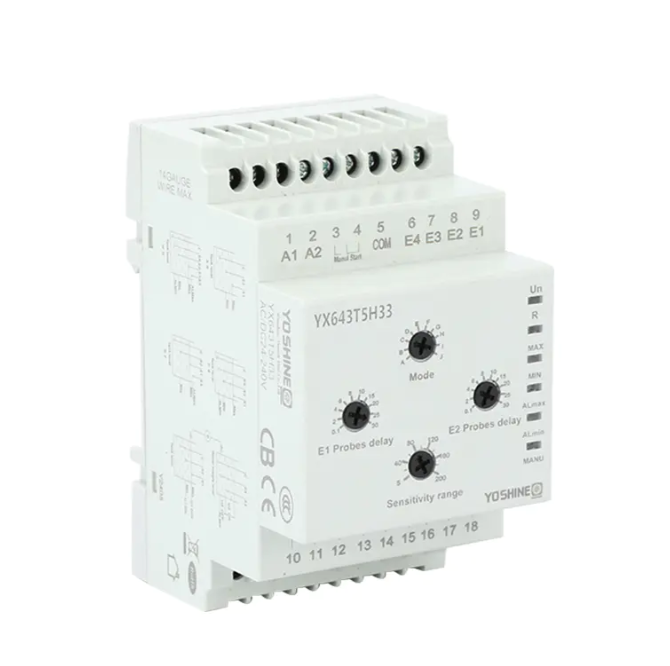A Level Controller Relay is a control device designed to monitor and regulate the level of liquids in tanks, reservoirs, or other containers. It plays a crucial role in preventing overflow, dry-running of pumps, and maintaining consistent levels in various industrial and domestic systems. By automating the detection and control process, this relay improves both operational safety and system efficiency.
The working principle of a Level Controller Relay involves sensing liquid levels through electrodes, float switches, or ultrasonic sensors and activating relay contacts when predefined high or low limits are reached. The relay then triggers actions such as turning pumps on or off, opening valves, or sending alerts to an operator. This automatic control helps reduce manual monitoring and ensures more precise liquid management.
One of the common applications of a Level Controller Relay is in water tanks for residential and commercial buildings. In such settings, the relay prevents tank overflow by cutting off the pump when the water reaches the upper threshold. Likewise, when water falls below a certain level, it reactivates the pump, ensuring that the tank remains adequately filled. This cycle reduces water wastage and supports consistent supply.
In industrial processes, a Level Controller Relay is often used in chemical tanks, wastewater treatment plants, and cooling systems. For instance, in a chemical processing facility, maintaining proper liquid levels is critical for safety and product quality. The relay helps by controlling feed or discharge pumps based on liquid level changes, allowing uninterrupted and safe operation.
Dry-running protection is another important feature of the Level Controller Relay. Pumps operating without sufficient liquid can quickly overheat or become damaged. By disconnecting the pump when the fluid level drops too low, the relay prevents mechanical failure and costly repairs. This makes it especially valuable in borehole water systems and sump pump installations.
A Level Controller Relay typically includes adjustable sensitivity and delay settings, which allow users to tailor the response time and behavior to the needs of their application. Time delay prevents unnecessary switching caused by turbulence or temporary fluctuations in the liquid level. Additionally, some relays are equipped with LED indicators or display panels to show real-time status and help with system diagnostics.
Installation of a Level Controller Relay is usually simple and compatible with existing systems. The relay can be panel-mounted and connected directly to float sensors or electrode probes placed at specific levels within the tank. Depending on the model, the relay may support single-phase or three-phase pump control and offer both manual and automatic modes.
Modern Level Controller Relay designs often come with added features such as alarm output contacts, adjustable threshold levels, and even communication interfaces for remote monitoring. These enhancements are particularly useful in facilities where centralized control or integration with programmable logic controllers (PLCs) is required.
While the core function of the Level Controller Relay remains consistent, different models are tailored for clean water, wastewater, viscous fluids, or corrosive chemicals. Material compatibility and electrical ratings should be considered when selecting a unit for a specific application.
The Level Controller Relay offers a practical and reliable solution for automatic liquid level monitoring and pump control. Whether in a home water tank, an industrial chemical process, or a drainage system, this device contributes to smoother operations, reduced manual oversight, and greater equipment protection.

